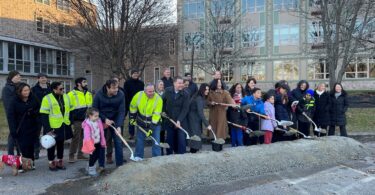by Thaddeus Minshall
Businesses looking to build or renovate corporate home offices have an opportunity to reinforce overarching company goals and values with their physical structures and environments. As every company culture is unique, there are no cookie-cutter answers to all corporate office construction or renovation questions. However, there are some widely applicable principles that will generally make your employees feel that they are “at home” in your building.
First and foremost, you need to make sure your employees’ basic needs are met. In the year ahead, such issues may be even more important than usual as employees increasingly return to the office in conjunction with getting COVID under control. While there are many steps employers can and should take regarding the coronavirus, my focus here is not to parrot CDC guidelines for public health in the workplace (though of course I suggest all employers follow said guidelines), but rather to offer insights that may remain of use in a post-COVID workplace.
It may take time for all employees to be fully comfortable again, but keep in mind that the somewhat nebulous feeling of being “at home” in a work environment leads to greater employee productivity, satisfaction, and retention, so it’s likely time to reconsider the import of your physical environment. As you do so, here are a few guiding lights to keep in mind.
#1: Mimic the natural world.
While it may not be practical to move most office work outside, you can emphasize the natural world inside. For example, plants are known to increase employee morale and create a positive impression among external visitors while also improving air quality. Incorporating as much natural light as possible is also closely tied to employee satisfaction and well-being.
#2: Engage a strategic approach to interior design.
Whether you are a small creative services firm or a large manufacturing company, your building tells a story about your company culture to both your employees and your visitors, so you will want to give thought to design concerns such as branding, color, and decor.
Recognize that most employees, not just introverts, prefer to have a door or a space where they can privately regroup. If this is not possible in your office, compensate by building in bookable private spaces, affording your workforce some place to gather themselves when needed, as all of us must do on occasion. Which leads to our third and final point…
#3: Build “human space” into “workspace.”
Not every company has the resources to build a gym, but there are many ways to breathe humanity into your office design. One possibility is a wellness room: a place where nursing mothers or employees with medical issues can do what they need to do.
Welcoming outdoor space is another option; picnic tables might encourage your employees to gather outside of the office stress to connect with one another, another key component in maintaining a happy, productive workforce.
Upgrading your corporate offices will not instantly solve all human resources issues, nor is it likely to deliver more impact than tried and true approaches such as getting your team together for social time outside of the office on a somewhat regular basis. However, if you do not pay attention to any of these issues, your employee engagement will likely suffer. In that sense, making your office feel like “home” to your team isn’t just a kind thing to do; for your organization, it is “preventative maintenance.”
Thaddeus Minshall is vice president of real estate/development at Connolly Brothers Inc., where he manages Connolly’s real estate portfolio, tenant relationships, and acquisitions.












